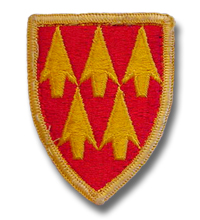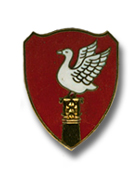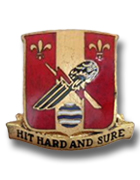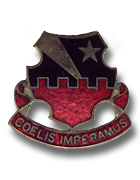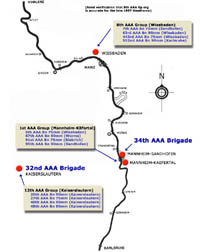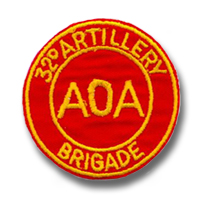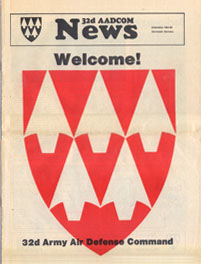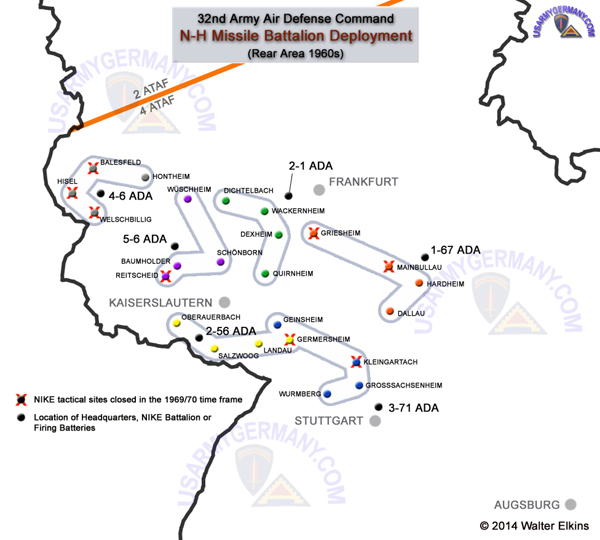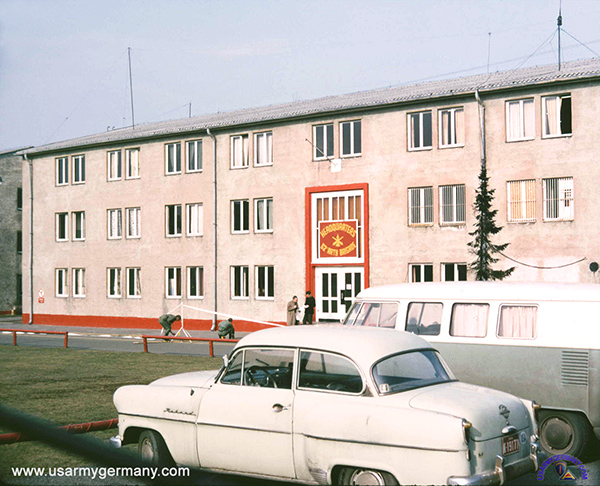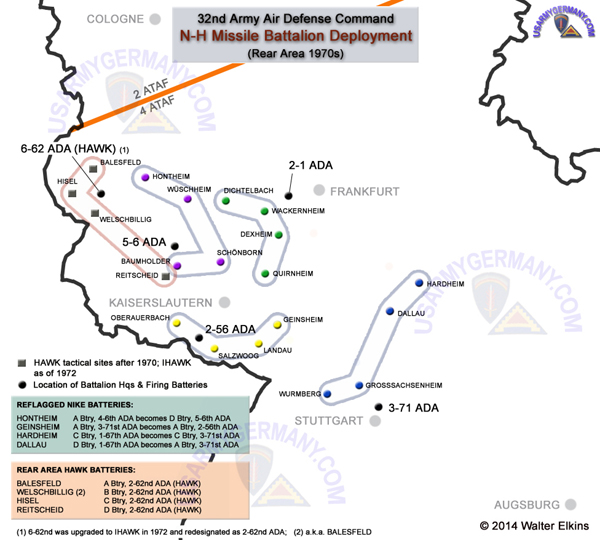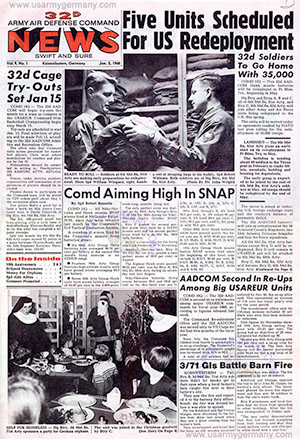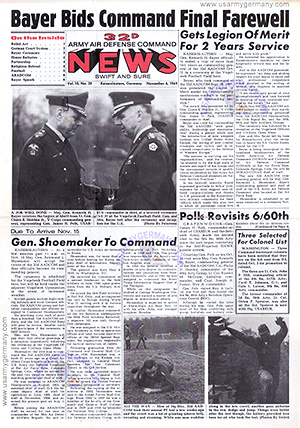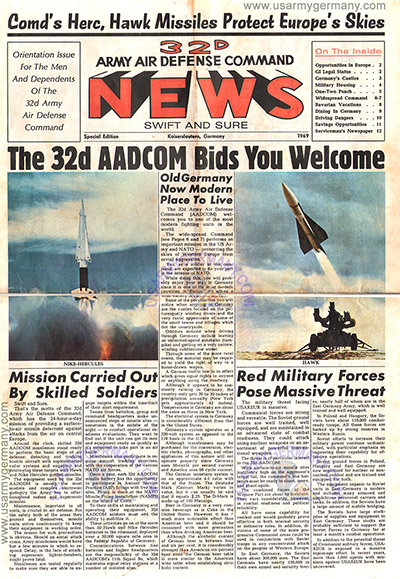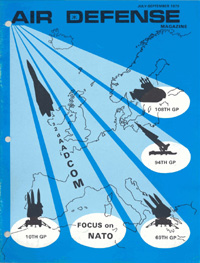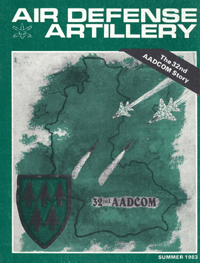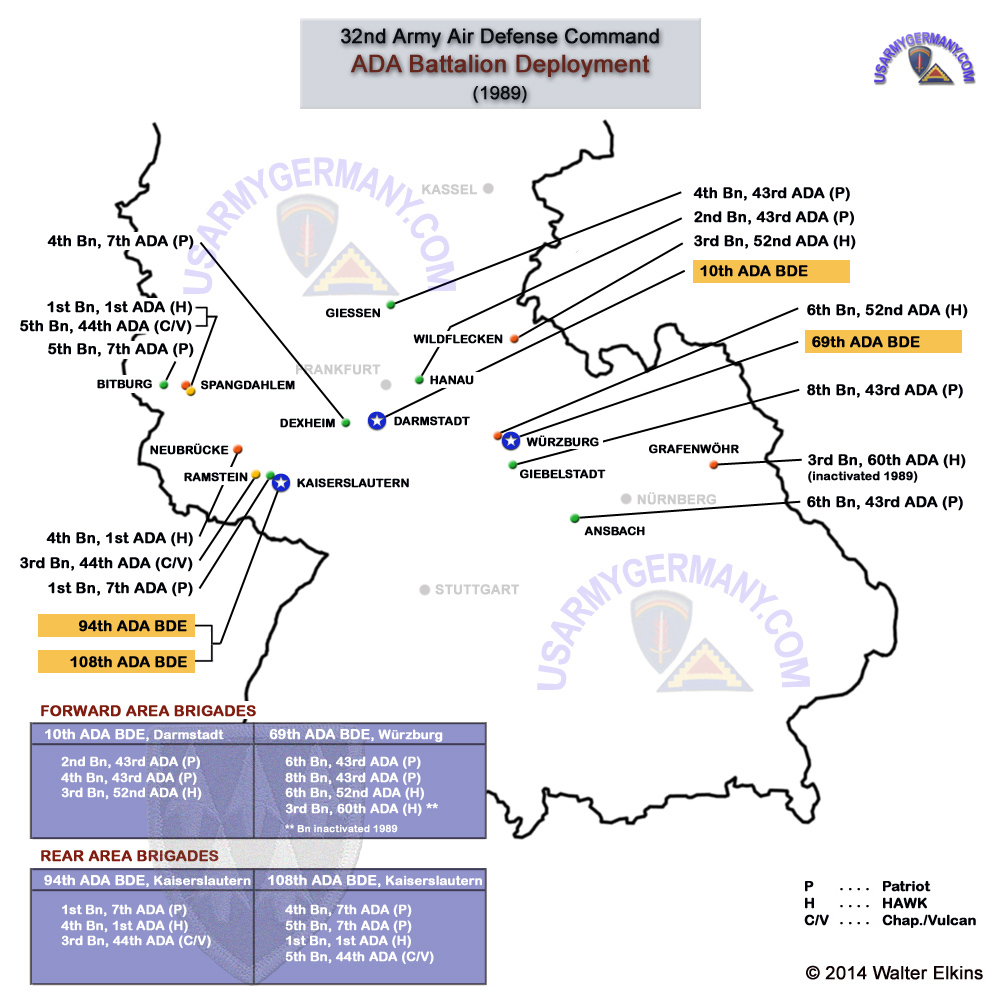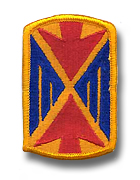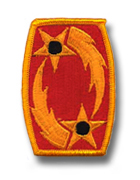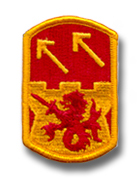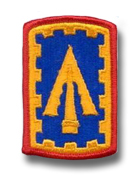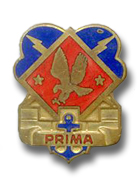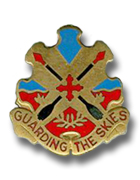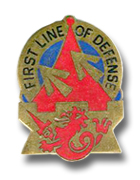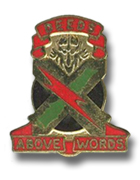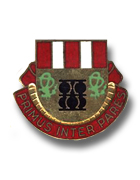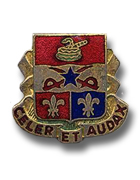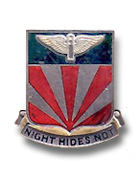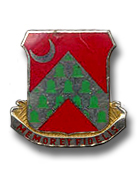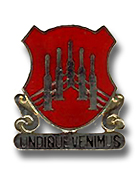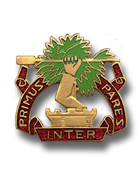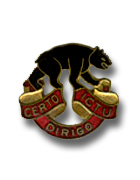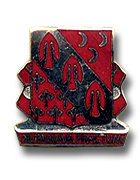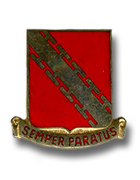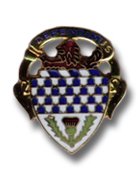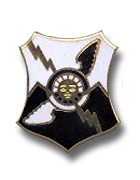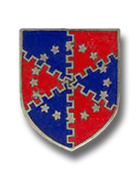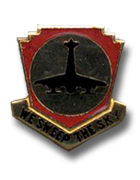| If you do
NOT see the Table of Contents frame to the left of this page, then
Click here to open 'USArmyGermany' frameset |
||||||||||||||||||||||||||||||||||||||||||||||||||||||||||||||||||||||||||||||
|
32nd
Army Air Defense Command |
||||||||||||||||||||||||||||||||||||||||||||||||||||||||||||||||||||||||||||||
|
|
||||||||||||||||||||||||||||||||||||||||||||||||||||||||||||||||||||||||||||||
|
||||||||||||||||||||||||||||||||||||||||||||||||||||||||||||||||||||||||||||||
|
|
||||||||||||||||||||||||||||||||||||||||||||||||||||||||||||||||||||||||||||||
| History | ||||||||||||||||||||||||||||||||||||||||||||||||||||||||||||||||||||||||||||||
| 32nd AAA Brigade in the United Kingdom | ||||||||||||||||||||||||||||||||||||||||||||||||||||||||||||||||||||||||||||||
| 1950s | ||||||||||||||||||||||||||||||||||||||||||||||||||||||||||||||||||||||||||||||
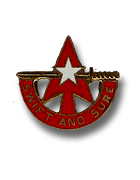 32nd
Army Air Defense Command DI 32nd
Army Air Defense Command DI |
||||||||||||||||||||||||||||||||||||||||||||||||||||||||||||||||||||||||||||||
| (Source: 32nd AAA Brigade , Command Report 1952, Hqs EUCOM/USAREUR) | ||||||||||||||||||||||||||||||||||||||||||||||||||||||||||||||||||||||||||||||
|
||||||||||||||||||||||||||||||||||||||||||||||||||||||||||||||||||||||||||||||
|
|
||||||||||||||||||||||||||||||||||||||||||||||||||||||||||||||||||||||||||||||
| 1950 | ||||||||||||||||||||||||||||||||||||||||||||||||||||||||||||||||||||||||||||||
| (Source: Army Navy & Air Force Journal, 11 Nov 1950) | ||||||||||||||||||||||||||||||||||||||||||||||||||||||||||||||||||||||||||||||
| Four Army antiaircraft artillery units will be stationed in the United Kingdom during the early winter to complement existing Air Force establishments in England. Scheduled for overseas movement are the following units: |
||||||||||||||||||||||||||||||||||||||||||||||||||||||||||||||||||||||||||||||
| (Source: List of General Orders Naming Kasernes, USAREUR Military History web site) | ||||||||||||||||||||||||||||||||||||||||||||||||||||||||||||||||||||||||||||||
| General Order
No. 32, 24 April 1951 Section I Reorganization of Certain Antiaircraft Battalions 1. Pursuant to authority contained in DA letter, AGAO-I (7 Mar 51) G1-M, 12 March 1951, subject, "Activation, Redesignation and Reorganization of Certain Units in the European Command," the following units are reorganized as indicated below with an authorized strength of 39 officers, 7 warrant officers, and 841 enlisted men each, effective 1 May 1951. |
||||||||||||||||||||||||||||||||||||||||||||||||||||||||||||||||||||||||||||||
|
||||||||||||||||||||||||||||||||||||||||||||||||||||||||||||||||||||||||||||||
|
|
||||||||||||||||||||||||||||||||||||||||||||||||||||||||||||||||||||||||||||||
| 1956 | ||||||||||||||||||||||||||||||||||||||||||||||||||||||||||||||||||||||||||||||
| (Source: Emails from Theo Clark, USAF) | ||||||||||||||||||||||||||||||||||||||||||||||||||||||||||||||||||||||||||||||
| I was assigned to the 6th Signal Det. at RAF Shellingford, England in June 1956. This unit was located on an Air Force installation, namely 7568th Material Squadron. The members of 6th Signal Det. were a joint service organization, being commanded by an Army Warrant Officer, with a USAF MSgt as NCOIC. The Radar & Communication technicians were made up of US Army and US Air Force personnel. Our function was to provide maintenance on search radar units operated by the US Army, with said info being provided to members of the 32nd AAA Brigade units attached to particular USAF bombers bases. At this time the air defense responsibility for the air base fell to the 32nd AAA Divison. In 1957, the 32nd AAA Division was deactivated in England and transferred to Germany. I can trace my command lineage from the 7568th Material Squadron, to the 7500 Air Base Group, which reported to the 3rd Air Force, a part of USAFE. But, I've been unable to determine the command lineage for the US Army 6th Signal Det. I've spoken to a member of the US Army, who was stationed with me at RAF Shellingford, England, and he did not know the command structure of the 6th Signal Det. I'm sure it reports back to a Signal Unit thru to higher levels of command. Any assistance with this endeavor would be greatly appreciated. Can anybody assist in finding the military lineage of the 6th Signal Detactment? |
||||||||||||||||||||||||||||||||||||||||||||||||||||||||||||||||||||||||||||||
| AAA UNITS IN THE UK - 1950s | ||||||||||||||||||||||||||||||||||||||||||||||||||||||||||||||||||||||||||||||
|
||||||||||||||||||||||||||||||||||||||||||||||||||||||||||||||||||||||||||||||
|
|
||||||||||||||||||||||||||||||||||||||||||||||||||||||||||||||||||||||||||||||
| STARS & STRIPES article about the 32nd AAA Bde in England, December 1956 | ||||||||||||||||||||||||||||||||||||||||||||||||||||||||||||||||||||||||||||||
| (Sources: The
32nd AADCOM Story - From Caissons To Missiles, G-3 Sec, HQ, 32nd
AADCOM, 1971; various issues of the 32nd AADCOM News - 1980s; and personal notes) |
||||||||||||||||||||||||||||||||||||||||||||||||||||||||||||||||||||||||||||||
| On Feb 6 1951,
the 32nd Antiaircraft Artillery Brigade
was reactivated at Mildenhall, England. The Brigade was composed of
four AAA battalions and one chemical smoke battalion. Its primary
mission was to provide anti-aircraft defense for the area airbases
operated by USAFE. The Brigade also served as the senior US Army headquarters
in the United Kingdom. Although a subordinate command of USAREUR, the brigade coordinated administrative policies with the US Third Air Force, was under the operational control of the British Fighter Command and maintained liaison with the Air Force, Navy and the British War Office. During this period, the units of the 32nd AAA Bde were equipped with the 40mm ("twin forties") air defense gun systems. These systems were later converted to the 75-mm gun systems. Units assigned to the 32nd AAA Brigade during this period (see AN&AFJ): ORGANIZATION (1951-57): |
||||||||||||||||||||||||||||||||||||||||||||||||||||||||||||||||||||||||||||||
|
||||||||||||||||||||||||||||||||||||||||||||||||||||||||||||||||||||||||||||||
| On October 1 1953, Headquarters, 32nd AAA Brigade moved from Mildenhall to Bushey Hall Military Reservation near London, England. | ||||||||||||||||||||||||||||||||||||||||||||||||||||||||||||||||||||||||||||||
| 32nd AAA Brigade in Germany | ||||||||||||||||||||||||||||||||||||||||||||||||||||||||||||||||||||||||||||||
| 1957 | ||||||||||||||||||||||||||||||||||||||||||||||||||||||||||||||||||||||||||||||
| (Source: Bob Gunnarsson) | ||||||||||||||||||||||||||||||||||||||||||||||||||||||||||||||||||||||||||||||
|
||||||||||||||||||||||||||||||||||||||||||||||||||||||||||||||||||||||||||||||
| (Source: STARS & STRIPES, July 28, 1957) | ||||||||||||||||||||||||||||||||||||||||||||||||||||||||||||||||||||||||||||||
| The 32nd AAA Brigade has transferred its headquarters to Kaiserslautern, Germany from Bushey Hall, England. Col William Massello, Jr., brigade CO, has assumed duties of Kapaun Barracks coordinator. |
||||||||||||||||||||||||||||||||||||||||||||||||||||||||||||||||||||||||||||||
| (Source: STARS & STRIPES, July 3, 1967) | ||||||||||||||||||||||||||||||||||||||||||||||||||||||||||||||||||||||||||||||
| In an S&S article commemorating the 10th Anniversary of the 32nd AADC's presence in Germany, some unit historical information was presented: After the 32nd AAA Brigade moved from Bushey Hall, Herts, England to Kaiserslautern, Germany in 1957, two of the 34th AAA Bde's groups were reassigned to the 32nd - 1st AAA Group in Mannheim-Kaefertal and 12th AAA Group in Kaiserslautern. (Webmaster note: that would have left the 34th AAA Bde with the 8th AAA Gp in Wiesbaden and the 69th AAA Gp in Knielingen. The 69th would be inactivated in Nov 1957. The 34th AAA Bde was inactivated in October 1958.) Each of the AAA groups assigned to the 32nd consisted of four AAA battalions. 1st AAA Group had two battalions equipped with 75-mm guns and two with 90-mm guns. 12th AAA Group had three battalions equipped with 90-0mm guns and one with 75-mm guns. (Webmaster note: the above graphic provides a list of the AAA battalions attached to the 1st and 12th Groups after the reorganization in 1957.) |
||||||||||||||||||||||||||||||||||||||||||||||||||||||||||||||||||||||||||||||
| (Sources: The 32nd AADCOM Story - From Caissons To Missiles, G-3 Sec, HQ, 32nd AADCOM, 1971; various issues of the 32nd AADCOM News - 1980s; and personal notes) |
||||||||||||||||||||||||||||||||||||||||||||||||||||||||||||||||||||||||||||||
| In the early part of 1957, the 32nd AAA Brigade's mission -- defending certain Strategic Air Command (SAC) bases in the UK with Skysweeper units -- was abolished. At the same time USAREUR headquarters planned to relieve Seventh Army of the responsibility for air defense in the rear of the combat zone (west of the Rhine River). Accordingly, on June 30 1957, the 32nd AAA Brigade was relocated from England to Kaiserslautern (Kapaun Barracks, Vogelweh) in West Germany. Under the new realignment of USAREUR air defense responsibilities, the 32nd assumed the theater army air defense role west of the Rhine River providing air defense of the vital installations located there. (Webmaster Note: The 34th AAA Brigade, stationed in Germany since 1951, retained the field army air defense role in the combat zone east of the Rhine.) | ||||||||||||||||||||||||||||||||||||||||||||||||||||||||||||||||||||||||||||||
|
||||||||||||||||||||||||||||||||||||||||||||||||||||||||||||||||||||||||||||||
|
||||||||||||||||||||||||||||||||||||||||||||||||||||||||||||||||||||||||||||||
| 1962/63 | ||||||||||||||||||||||||||||||||||||||||||||||||||||||||||||||||||||||||||||||
| ORGANIZATION (1962/63): | ||||||||||||||||||||||||||||||||||||||||||||||||||||||||||||||||||||||||||||||
|
||||||||||||||||||||||||||||||||||||||||||||||||||||||||||||||||||||||||||||||
| The above map shows the deployment of the US Army NIKE-HERC battalions and firing batteries in the 4th Allied Tactical Air Force sector once construction of the permanent sites had been completed. This configuration remained in effect until 1969 when the reduction of N-H battalions within the 32nd AADCOM was initiated. If you have additional details or want to submit corrections, please contact me (see email link at top of page). |
||||||||||||||||||||||||||||||||||||||||||||||||||||||||||||||||||||||||||||||
| 1964 | ||||||||||||||||||||||||||||||||||||||||||||||||||||||||||||||||||||||||||||||
| (Source: STARS & STRIPES, May 6, 1964) | ||||||||||||||||||||||||||||||||||||||||||||||||||||||||||||||||||||||||||||||
| On May 4, 48 officers from SHAPE headquarters in Paris began a four-day visit to NIKE and HAWK missile batteries in the 32nd Artillery Brigade. Heading the list of officers attending the air defense mobility demonstrartions are German Lt Gen Mueller Hillebrand and Turkish Brig Gen Necdet Dogancay. Follwoing briefings on operations, logistics, intelligence and communications within the missile organizations, the grouped will move to actual sites seeing both missile systems go through their paces. The NIKE HERCULES briefings and demonstrations were conducted yesterday by Btry A, 1st Missile Bn, 67th Arty at the missile site near Darmstadt (Webmaster note: Griesheim airfield). Btry CO is Capt David H Foster. THE HAWK portion of the demonstrations is scheduled for today and will be presented by Btry B, 6th Missile Bn, 59th Arty at Babenhausen (Webmaster note: Babenhausen airfield). Btry CO is Capt Charles E. Deal. |
||||||||||||||||||||||||||||||||||||||||||||||||||||||||||||||||||||||||||||||
| (Source: STARS & STRIPES, June 11, 1964) | ||||||||||||||||||||||||||||||||||||||||||||||||||||||||||||||||||||||||||||||
| Guided missiles became a permanent part of the air defense shield in central Germany when Btry D, 1st Missile Bn, 67th Arty became operational on Jan 13, 1958. Btry D was the first Nike-Ajax battery to become operational in Germany. | ||||||||||||||||||||||||||||||||||||||||||||||||||||||||||||||||||||||||||||||
| (Source: Email from Byron Baker) | ||||||||||||||||||||||||||||||||||||||||||||||||||||||||||||||||||||||||||||||
I served in the 32nd Artillery Brigade in Germany from January, 1964 until June of 1966. |
||||||||||||||||||||||||||||||||||||||||||||||||||||||||||||||||||||||||||||||
| 1966 | ||||||||||||||||||||||||||||||||||||||||||||||||||||||||||||||||||||||||||||||
| (Source: STARS & STRIPES, April 29, 1966) | ||||||||||||||||||||||||||||||||||||||||||||||||||||||||||||||||||||||||||||||
| On May 11 1966, the 32nd Artillery Brigade (the largest brigade in the US Army) will be redesignated as the 32nd Army Air Defense Command. Headquarters for the new command will remain at Kapaun Barracks, Vogelweh (Kaiserslautern). The command will consist of all of the US Army surface-to-air missiles in Europe and have an authorized strength of about 14,000 men. The command will be organized as the brigade is today -- with 15 missile battalions (60 Nike and Hawk firing batteries) and one signal support battalion. The command will continue to perform its tactical air defense mission under the operational control of NATO's 4th Allied Tactical Air Force. The command is a major element of the air defense of Central Europe. |
||||||||||||||||||||||||||||||||||||||||||||||||||||||||||||||||||||||||||||||
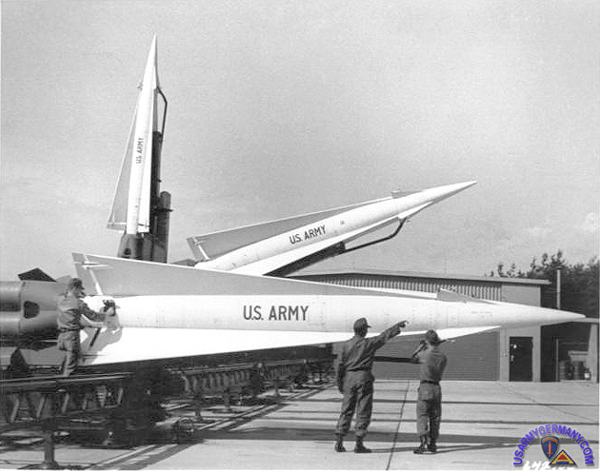 NIKE-HERCULES LA section (Charles Everett) |
||||||||||||||||||||||||||||||||||||||||||||||||||||||||||||||||||||||||||||||
| On July 1 1964,
Seventh US Army Sig Spt was reorganized as a Battalion and the dets
as Companies, per USAREUR GO 119, dtd March 26 1964. By 1964, the 32nd was equipped with both the HAWK and NIKE-HERC air defense missile systems. By 1966, the 32nd had become the largest artillery brigade in the US Army. On May 11 1966, the 32nd AAA Bde was redes as the 32nd Army Air Defense Command. The 32nd at that time comprised the 10th, 69th and 94th Arty Groups (the 108th Arty Group was added in 1974). The 32nd was the largest air defense unit in the US Army. As part of USAREUR and Seventh Army, the 32nd maintained a constant watch over West Germany in support of NATO. |
||||||||||||||||||||||||||||||||||||||||||||||||||||||||||||||||||||||||||||||
| 32nd Army Air Defense Command | ||||||||||||||||||||||||||||||||||||||||||||||||||||||||||||||||||||||||||||||
| 1967 | ||||||||||||||||||||||||||||||||||||||||||||||||||||||||||||||||||||||||||||||
| (Source: STARS & STRIPES, January 28, 1967) | ||||||||||||||||||||||||||||||||||||||||||||||||||||||||||||||||||||||||||||||
| HOUSE TRAILERS FROM FRANCE The first of 132 house trailers formerly used by U.S. Air Force families in France have arrived in Germany. These trailers will be used at remote sites opetrated by 32nd AADC battalions to improve living and working conditions. The trailers, 41-feet long, eight-feet wide and eight-feet high, have two bedrooms including a double bunk, a hallway with storage areas, combination kitchen-living room, a bathroom, space heaters and built-in in cabinets. One trailer can easily sleep six men. Some trailers are scheduled to be used as messing facilities or as ready rooms for the various missile units. The trailers for the 32nd are primarily coming from Toul and Etain, France which will be closing down as part of FRELOC, the relocation of US Forces out of France. A 32-man team, led by CWO Vernon Barksdale, has been in France since mid-November coordinating paper work and moving trailers to the various railheads for transport to Germany. Tentative plans have the trailers being shipped by rail, first to command units in southern Germany, then making a swing toward the north. Almost every battery in the command is programmed to receive a number of the trailers. 7th US Army Signal Support Bn will use 40 of the trailers for housing troops at remote radio relay sites, such as Imperial Relay, near Munich where troops now live in winterized tents. The 94th Arty Group is scheduled to receive 30; the 69th Arty Group should receive 33; and the 10th Arty Group is in line for 29. |
||||||||||||||||||||||||||||||||||||||||||||||||||||||||||||||||||||||||||||||
| (Source: STARS & STRIPES, August 7, 1967) | ||||||||||||||||||||||||||||||||||||||||||||||||||||||||||||||||||||||||||||||
| On July 21, 1967 the 32nd Army Air Defense Command changed its official abbreviation from "32nd AADC" to "32nd AADCOM." (32nd AADC was abopted in 1966 when the 32nd AAA Bde was reorganized and redesignated as a command.) The new designation eliminated an unpronouncable combination of letters. The new designation was designed to give the command a more descriptive, self-denoting abbreviation. |
||||||||||||||||||||||||||||||||||||||||||||||||||||||||||||||||||||||||||||||
| The above map shows the deployment of the four remaining US Army NIKE-HERC battalions as well as the newly deployed rear area HAWK battalion in the 4th Allied Tactical Air Force sector after the inactivation of two N-H battalions in the 1969/70 time frame. This configuration remained in effect until the early 1980s when the remaining N-H battalions were phased out. (Webmaster Note: The changes in the Rear Area air defense force structure - based on the AADEUR 1970-75 study - that included the stationing of a HAWK battalion and two C/V battalions in the rear area will be presented in more detail in a separate map.) If you have additional details or want to submit corrections, please contact me (see email link at top of page). |
||||||||||||||||||||||||||||||||||||||||||||||||||||||||||||||||||||||||||||||
| 1969 | ||||||||||||||||||||||||||||||||||||||||||||||||||||||||||||||||||||||||||||||
| (Source: STARS & STRIPES, March 10, 1969) | ||||||||||||||||||||||||||||||||||||||||||||||||||||||||||||||||||||||||||||||
| SP HAWK System 32nd AADCOM announced plans to convert four of its eight HAWK missile battalions to the Self-Propelled HAWK system during 1969 (starting in the Spring) and early 1970. The battalions to be converted are: The key component of the SP HAWK system is the self-propelled launcher. The launcher belongs to the same vehicle family as the armored personnel carrier. A basic SP HAWK firing unit can move from one position to another using only five prime movers (including three SP launchers). The current conventional HAWK firing unit in which the launchers are towed by trucks, requires ten. More than 70 self-propelled launchers, each one costing more than $200,000, will be utilized for the conversion of the four battalions. Organizationally, the SP HAWK battalion will have only three firing batteries (the conventional HAWK bn has four), but each firing battery will be increased to three separate firing units, compared to the two of the conventional firing battery. The net effect is that each SP firing battery will have nine firing units instead of the eight of the conventional battery. The first conventional HAWK units arrived in USAREUR in 1961. |
||||||||||||||||||||||||||||||||||||||||||||||||||||||||||||||||||||||||||||||
| (Sources: The 32nd AADCOM Story - From Caissons To Missiles, G-3 Sec, HQ, 32nd AADCOM, 1971; various issues of the 32nd AADCOM News - 1980s; and personal notes) |
||||||||||||||||||||||||||||||||||||||||||||||||||||||||||||||||||||||||||||||
| On Nov 21 1967, 11th AD Sig Bn was act, with no change in mission, per USAREUR GO 269, dtd Oct 26 1967. In 1969, four of the 32nd's eight HAWK battalions converted to the self-propelled configuration (6/60th; ...). These units were deployed to the forward areas of Germany which vastly increased the 32nd's capabilities. Also in 1969, in a program to streamline air defense assets in Europe, two NIKE-H battalions (1st Msl Bn, 67th Arty on Dec 26 1969; 4th Msl Bn, 6th Arty on Mar 26 1970) of the 94th Arty Gp were inactivated and two low-altitude CHAPARRAL/VULCAN air defense battalions were deployed to Germany to protect selected air bases. The C/V bns arrived in 1970 (2nd Bn, 60th Arty; 7th Bn, 61st Arty). ORGANIZATION (1970/71): |
||||||||||||||||||||||||||||||||||||||||||||||||||||||||||||||||||||||||||||||
|
||||||||||||||||||||||||||||||||||||||||||||||||||||||||||||||||||||||||||||||
| [1] Source: US Army Station List, 30 June 1970 [2] Source: US Army Station List, 30 Sept 1971 [3] Source: Email from Michael P. Sebek |
||||||||||||||||||||||||||||||||||||||||||||||||||||||||||||||||||||||||||||||
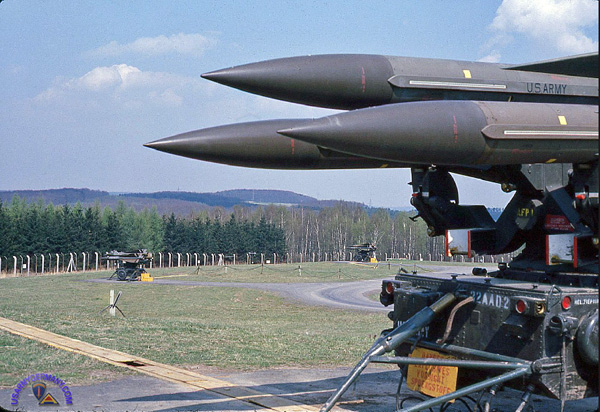 IHAWK, Giessen tactical site, 1977 (Larry Hicks) |
||||||||||||||||||||||||||||||||||||||||||||||||||||||||||||||||||||||||||||||
| In Nov 1972,
the first HAWK battalion (2nd, 62nd ADA) was converted to the I-HAWK
system. Also, during the latter part of 1972, the Forward Area Alerting
Radar system was introduced by adding FAAR platoons to the C/V units.
In July 1974, the commanding officer of 32nd AADCOM also assumed the role of community commander for Kaiserslautern. On Aug 26 1974, the 108th ADA Gp was react at Kapaun Bks, Kaiserslautern as the Army's only C/V short range air defense group. |
||||||||||||||||||||||||||||||||||||||||||||||||||||||||||||||||||||||||||||||
| 1974 | ||||||||||||||||||||||||||||||||||||||||||||||||||||||||||||||||||||||||||||||
| (Source: STARS & STRIPES, Dec 28, 1974) | ||||||||||||||||||||||||||||||||||||||||||||||||||||||||||||||||||||||||||||||
| The 32nd Army Air Defense Command comprises about 13,000 soldiers who are scattered throughout a 56,000-square-mile area in central and southern Germany - an area that stretches from Kassel in the north to Regensburg in the south and from the East German and Czech borders in the east to the French and Luzembourg borders to the west. The 32nd is the Army's largest air defense unit, with about 50 pecent of the US Army's air defense resources being deployed here in Germany. The 32nd AADCOM is an integral part of NATO's Allied Air Forces Central Europe and is under the operational control of the 4th Allied Tactical Air Force. The Command's mission is to protect NATO strike bases and maneuver forces within its area of responsibility. Among the weapon systems utilized by units of the command are the HAWK, Nike Hercules, and Chapparal missiles, as well as the 20-mm Vulcan gun. An estimated $14 million is spent annually to keep the missile systems of the command operational (this does not include personnel costs). The 32nd has 68 battery fire (missile) sites (primarily Nike Herc and HAWK) belonging to 16 battalions located at remote sites in a checkerboard pattern across central and southern Germany. Between 120 and 140 men are stationed at each site. In order to remain operational at all times, the men at each site (about 30-40 men per shift) are continuously involved with either watching, tracking or maintaining the equipment along with other routine site duties. The men of the 32nd are tested on a regular basis to establish their operational readiness. Teams from battalion, group, 32nd AADCOM HQ and 4th ATAF make unannounced visits to the missile sites to conduct evaluations that determine if they can engage targets successfuly and within the time limits of their alert requirement. Once a year each missile battery must participate in an Annual Service Practice firirng exercise with live missiles at the NATO Missile Firing Range on Crete. |
||||||||||||||||||||||||||||||||||||||||||||||||||||||||||||||||||||||||||||||
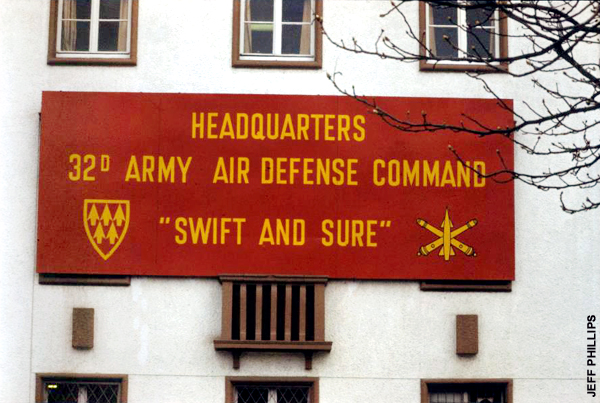 Sign on HQ Building, 32nd AADCOM, Cambrai-Fritsch Kaserne, Darmstadt (Jeff Phillips) |
||||||||||||||||||||||||||||||||||||||||||||||||||||||||||||||||||||||||||||||
| (Sources: The 32nd AADCOM Story - From Caissons To Missiles, G-3 Sec, HQ, 32nd AADCOM, 1971; various issues of the 32nd AADCOM News - 1980s; and personal notes) |
||||||||||||||||||||||||||||||||||||||||||||||||||||||||||||||||||||||||||||||
| In Sep 1975, after HQ 32nd AADCOM moved to Darmstadt, the 108th moved to Kleber Ksn, Kaiserslautern. ORGANIZATION (June 1976): |
||||||||||||||||||||||||||||||||||||||||||||||||||||||||||||||||||||||||||||||
|
||||||||||||||||||||||||||||||||||||||||||||||||||||||||||||||||||||||||||||||
| [1] Source: US Army Station List, 1 June 1976 [2] 2nd Bn, 55th ADA (MBL HAWK) at Fort Bliss is a REFORGER unit earmarked for the 10th ADA Gp |
||||||||||||||||||||||||||||||||||||||||||||||||||||||||||||||||||||||||||||||
|
||||||||||||||||||||||||||||||||||||||||||||||||||||||||||||||||||||||||||||||
| In Oct 1981, the 32nd AADCOM was deployed over 56,000 sq mi of the FRG and had a strength of 16,000 soldiers. ORGANIZATION (1982): |
||||||||||||||||||||||||||||||||||||||||||||||||||||||||||||||||||||||||||||||
|
||||||||||||||||||||||||||||||||||||||||||||||||||||||||||||||||||||||||||||||
| The 108th ADA Bde was redes from Gp to Bde on July 16, 1983. | ||||||||||||||||||||||||||||||||||||||||||||||||||||||||||||||||||||||||||||||
|
||||||||||||||||||||||||||||||||||||||||||||||||||||||||||||||||||||||||||||||
| (Source: James G. Smith) | ||||||||||||||||||||||||||||||||||||||||||||||||||||||||||||||||||||||||||||||
Phase-out of the US Army NIKE-HERC Battalions in Germany, early 1980s |
||||||||||||||||||||||||||||||||||||||||||||||||||||||||||||||||||||||||||||||
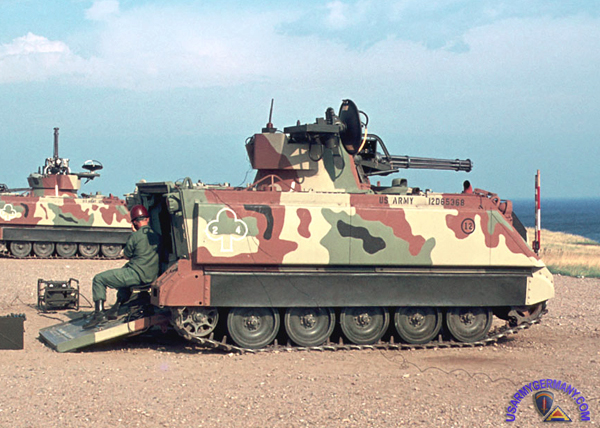 M163 Vulcan at Todendorf Range |
||||||||||||||||||||||||||||||||||||||||||||||||||||||||||||||||||||||||||||||
| The NIKE-H missile system completely left the 32nd AADCOM inventory in 1984. (The last NIKE battalion in Germany was the 3rd Bn, 71st ADA.) The last missile fired off Crete was in the summer of 1985. Several HAWK battalions were withdrawn from Europe to pave the way for the deployment of the PATRIOT system. In Jan 1985, the 4th Bn, 3rd ADA became the first PATRIOT missile bn deployed to Europe (see CORRECTION). The PATRIOT quickly became the cornerstone of air defense in the central region of Germany. PATRIOT grew from four bns in 1987 to seven in the summer of 1989. Additional firing batteries were added in the fall of 1990. 32nd AADCOM was operationally under the control of 4ATAF (along with the 1st Canadian Air Gp, 1st and 2nd German Air Divs, and the 3rd and 17th US Air Forces). The collapse of communism in Europe in the late 1980s removed the need for massive concentration of defensive assets, such as air defense artillery units in Germany. Thus the 32nd AADCOM, as other commands in Europe, began a process of trimming back to a leaner, more mobile organization. |
||||||||||||||||||||||||||||||||||||||||||||||||||||||||||||||||||||||||||||||
| CORRECTION: (Source: Email from Michael D. Lindsey) The first Patriot battalion that was deployed to |
||||||||||||||||||||||||||||||||||||||||||||||||||||||||||||||||||||||||||||||
| If you have additional details or want to submit corrections, please contact me (see email link at top of page). | ||||||||||||||||||||||||||||||||||||||||||||||||||||||||||||||||||||||||||||||
| 32nd AADCOM - Drawdown and Inactivation | ||||||||||||||||||||||||||||||||||||||||||||||||||||||||||||||||||||||||||||||
| On Sep 13 1991, the 69th ADA Bde and 3rd Bn, 44th ADA became a part of V Corps. 4th Bn, 7th ADA (P) deployed to I Corps in the US. 1st Bn, 1st ADA, 5th Bn, 44th ADA, 8th Bn, 43rd ADA and several batteries have been inactivated. 1st Bn, 7th ADA and 5th Bn, 7th ADA deployed to Saudi Arabia for "Operation Determined Resolve". The command continued to modernize its equipment with the PIP III upgrade of HAWK equipment, constant evaluation and upgrade of PATRIOT equipment, programming.with Raytheon Corp, and the standardization of gunnery tables and personnel training at the new 32nd AADCOM Battle Simulation Cen in Darmstadt. On July 15 1992, the 10th ADA Bde was inactivated in Darmstadt. On July 15 1995, 32nd AADCOM was inactivated in Darmstadt. HHB, 94th ADA Brigade and the 413th Sig Co were subsequently relocated from Kaiserslautern to Darmstadt. |
||||||||||||||||||||||||||||||||||||||||||||||||||||||||||||||||||||||||||||||
|
|
||||||||||||||||||||||||||||||||||||||||||||||||||||||||||||||||||||||||||||||
| MAJOR SUBORDINATE UNITS - 1980s | ||||||||||||||||||||||||||||||||||||||||||||||||||||||||||||||||||||||||||||||
|
||||||||||||||||||||||||||||||||||||||||||||||||||||||||||||||||||||||||||||||
|
|
||||||||||||||||||||||||||||||||||||||||||||||||||||||||||||||||||||||||||||||
| NIKE-HERCULES UNITS - 1960s | ||||||||||||||||||||||||||||||||||||||||||||||||||||||||||||||||||||||||||||||
|
||||||||||||||||||||||||||||||||||||||||||||||||||||||||||||||||||||||||||||||
|
|
||||||||||||||||||||||||||||||||||||||||||||||||||||||||||||||||||||||||||||||
|
||||||||||||||||||||||||||||||||||||||||||||||||||||||||||||||||||||||||||||||
|
|
||||||||||||||||||||||||||||||||||||||||||||||||||||||||||||||||||||||||||||||
| HAWK UNITS - 1960s | ||||||||||||||||||||||||||||||||||||||||||||||||||||||||||||||||||||||||||||||
|
||||||||||||||||||||||||||||||||||||||||||||||||||||||||||||||||||||||||||||||
|
|
||||||||||||||||||||||||||||||||||||||||||||||||||||||||||||||||||||||||||||||
| 3rd Ordnance Battalion | ||||||||||||||||||||||||||||||||||||||||||||||||||||||||||||||||||||||||||||||
| 1982 | ||||||||||||||||||||||||||||||||||||||||||||||||||||||||||||||||||||||||||||||
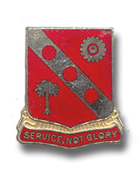 3rd Ord Bn DUI
3rd Ord Bn DUI |
||||||||||||||||||||||||||||||||||||||||||||||||||||||||||||||||||||||||||||||
| (Source: The News, November 1982) | ||||||||||||||||||||||||||||||||||||||||||||||||||||||||||||||||||||||||||||||
| Ordnance battalion
joins command By John Ann Floyd Members of the 3rd Ordnance Battalion had to rip off old patches and sew on new ones Nov. 1 after their unit became an official part of 32d AADCOM in reorganization ceremonies here. Two elements of the battalion, the 3rd Ordnance Headquarters and 4th Ordnance Company, were formerly part of the 59th Ordnance Brigade. The November ceremony marked the beginning of a long awaited reorganization which will eventually lead to a complete support command, said Maj. Kurt Frey, Plans and Management Division, G-4, 32d AADCOM. "On Nov. 1, the 3rd Ord Bn headquarters and the 4th Ord Co. were re-assigned to the 32d AADCOM from the 59th Bde. That battalion headquarters will become the Command and Control headquarters for the support command," said Frey. "When fully complete, this will be a support command with about 12-14 direct support companies, one general support company, and a material management center - all under the 3rd Ord Bn." Some of the guests at the 10:30 a.m. ceremony were: Maj. Gen. William E. Cooper, commander, 32d AADCOM; Brig. Gen. Harry D. Walker, 59th Ord Bde. commander; Col. Marvin E. Simmons, 32d AADCOM Deputy for Support; LTC Donald C. Fischer, commander, 3rd Ord Bn, members of the Worms community, 5th Signal Command, and the 32d AADCOM staff. The ceremony was held at the Bouwkamp Gym at Taukkunen Barracks. Participating in the ceremony were about 50 soldiers from HHC and 4th Ord Co., commanded by Capt. James Fowler and Capt. Jose Hidalgo. The unit's command sergeant major is Charles C. Freshnock. Members of the color guard were: Sgt. Dwight Lord, SSgt. Larry Montandon, Sgt. Edouard John and Sgt. Theodus Green. Guidon bearers for HHC and 4th Ord Co. were Sp5 Darrell Floyd and Sp4 Alton Winters. A reception for selected guests was held after the ceremony. Planners believe the reorganization will improve readiness within the command and upgrade the support functions. "In the past, the Direct Support Units were scattered, not integrated, and we had little control over them," explained Frey. Under the control of the support command, the DSUs (soon to be Direct Support Companies), won't be as inaccessable to the command as they were in the past. "Instead of 32d management getting information after the fact," said Frey, "we'll now be able to take steps to influence the action." This can be done, said Frey, through the creation of the MCC, which gives the command better management in the logistics area -- the ability to control logistics expenditures, requisitions -- in all, to better improve readiness. Among other things, MCCs can automate the property books and cross-level parts. "It will help us to keep a handle on what is in the command," continued Frey, "For example, now we may have a unit that is turning a part in. Less than 100-kilometers away, we may have another unit which has just put the same part on requisition -- but we don't know about it." Use of computers could ease problems like these, Frey said. "The skeletal work will begin on the MCC in January, and we'll build on as slots and people become available;' he said. Frey estimates that the process should be completed by January 1985. The only outside units the command will gain will be HHC, 4th Ord Co, and the MCC. The DSUs at the air defense battalions will simply reflect an organizational change which would put all support units under the support headquarters. No units will be physically moved, so there's no need for anyone to pack his or her bags. In addition, the Direct Support Companies will be able to perform maintenance on most of the day-to-day equipment at the units, to include trucks, communications equipment, masks, rifles, generators, as well as missile maintenance. "Well get most of our support from the battalion," Frey concluded. "We'll finally have one shop place for maintenance and most supply functions." |
||||||||||||||||||||||||||||||||||||||||||||||||||||||||||||||||||||||||||||||
|
|
||||||||||||||||||||||||||||||||||||||||||||||||||||||||||||||||||||||||||||||
| (Source: BANNER, September 1983) | ||||||||||||||||||||||||||||||||||||||||||||||||||||||||||||||||||||||||||||||
| Army's biggest
battalion; Worm's smallest company There's something about 3rd Ordnance (Battalion) that is just a little bit different from the rest of us soldiers here in Worms. Sometimes the differences are hard to pinpoint, like a snappier salute, shinier boots or maybe a lower, military tip of the hat. And sometimes the differences are more obvious like their 6:00 am physical training program. Whatever the differences are, 3rd Ord remains somehwat mysterious (although not secretive) to most of the Worms community. When the Banner asked 3rd Ordnance's (headquarters) company commander, 2nd Lt. John Green to speculate on these differences, Green's response was instantaneous and decisive. "Well, for one thing we're combat oriented and everyone else here is Worms is staff oriented," Green said. "We're headquarters for all of 3rd Ordnance Battalion in the Federal Republic of Germany." Stretching from the Luxembourg border to the Czechoslavokian border, 3rd Ord. professes to be the largest battalion by composition in the United States Army with approximately 1400 soldiers and 14 companies. Of the 1,400 soldiers only about 69 are stationed here in Worms. According to Green, half of the 69 are usually on TDY. Ironically, while 3rd Ord. may be the largest battalion in the Army, it is one of the smallest companies on post. Where's the equipment Third Ordnance is said to deal with Army equipment, but there are few large pieces of Army equipment here in Worms. "As headquarters, we direct the supply and maintenance efforts for air defense missile systems in 32d AADCOM. We provide technical contact teams to fix the equipment on site," Green explained. The Battalion provides command and control to Direct and General Support Missile Companies supporting all 32nd Army Air Defense Command fielded missile systems. "Combat readiness, of course, becomes an essential part of our mission," Green added. |
||||||||||||||||||||||||||||||||||||||||||||||||||||||||||||||||||||||||||||||
|
|
||||||||||||||||||||||||||||||||||||||||||||||||||||||||||||||||||||||||||||||
| Related Links: Bushey Hall 1953-55 (U.S. Army Base; 32nd Brigade Headquarters; 34th AAA Operations Detachment) - A very nice website 4th AAA Battalion - a unit page on the VERY well presented RAF UPPER HEYFORD Memorial Web Site. 94th Group Veteran's Website (dead link!) - a great site dedicated to the veterans of the 94th Air Defense Artillery Group and hosted by Joe Williams; superb Guestbook NIKE AJAX and HERCULES ORDNANCE Support Units - Doyle Piland's very informative website dedicated to the men and women, both military and civilian, who served in the various Nike Ajax and Hercules support shops throughout the world. NIKE Homepage B Btry, 2nd Bn, 52nd ADA, Landau D Btry, 6th Bn, 52nd ADA, Hardheim - very nice site with an interesting history of the arrival in Germany in June 1961 Hahn Air Base - great website dedicated to the 50th FBW's history and USAFE's second largest nuclear air base, Hahn Air Base, West Germany. Hohe Warte Patriot Site - great page on the first PATRIOT site to be established in Germany near Giessen. The site was a tactical site of 4th Battalion, 3rd ADA. Page is authored by Alex Leib, Lich, Germany. Active Duty ADA Regiments - |
||||||||||||||||||||||||||||||||||||||||||||||||||||||||||||||||||||||||||||||
